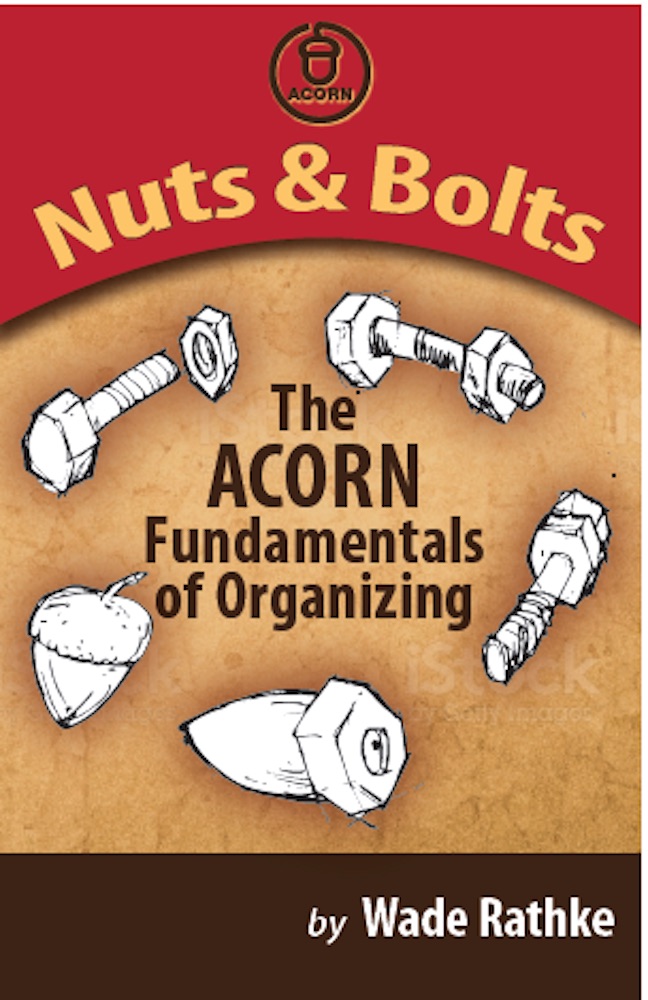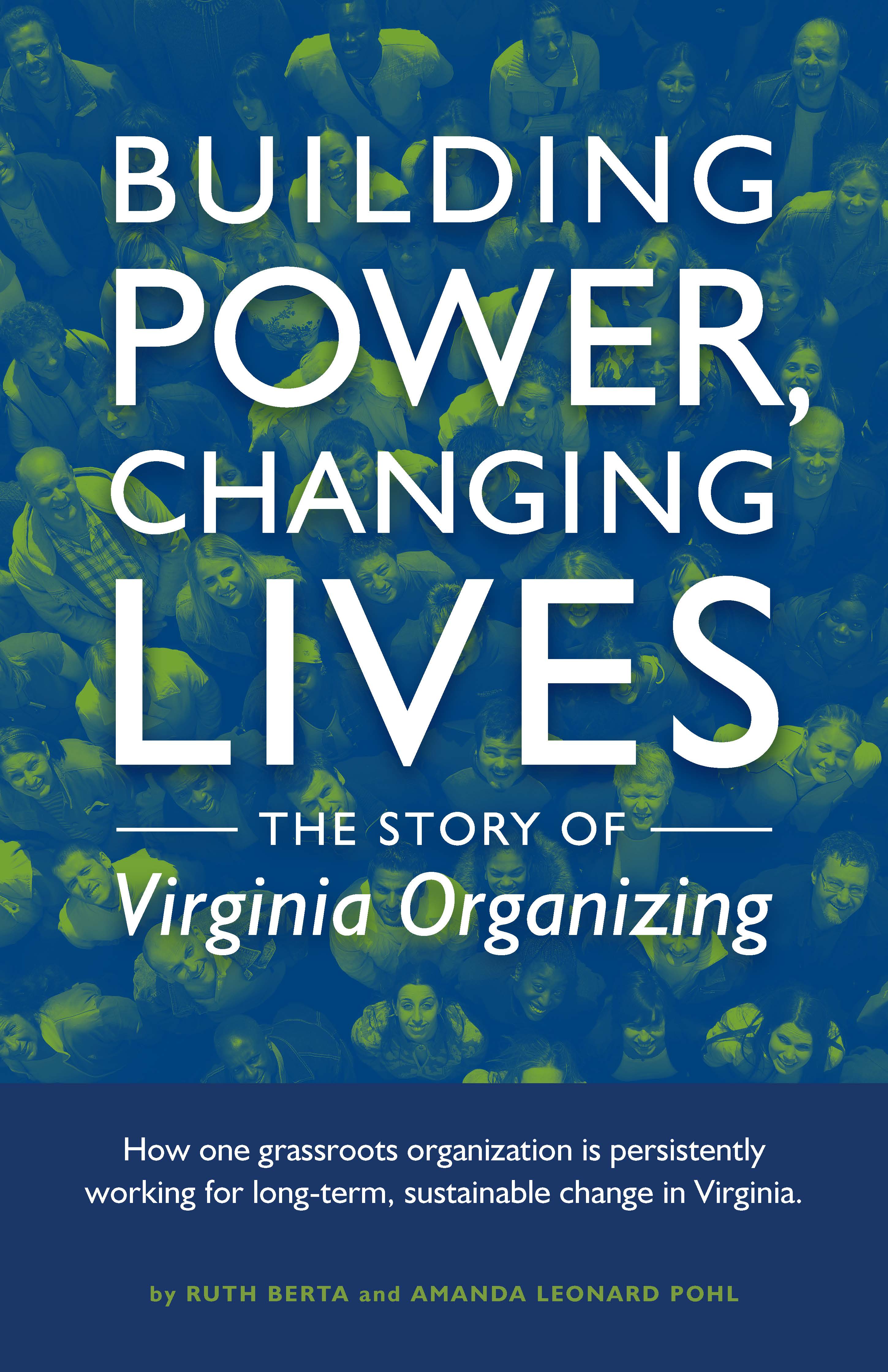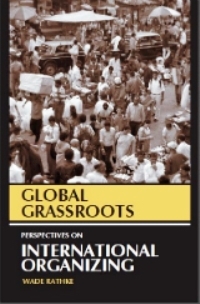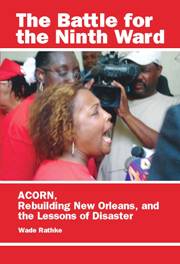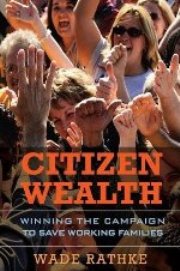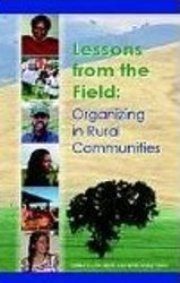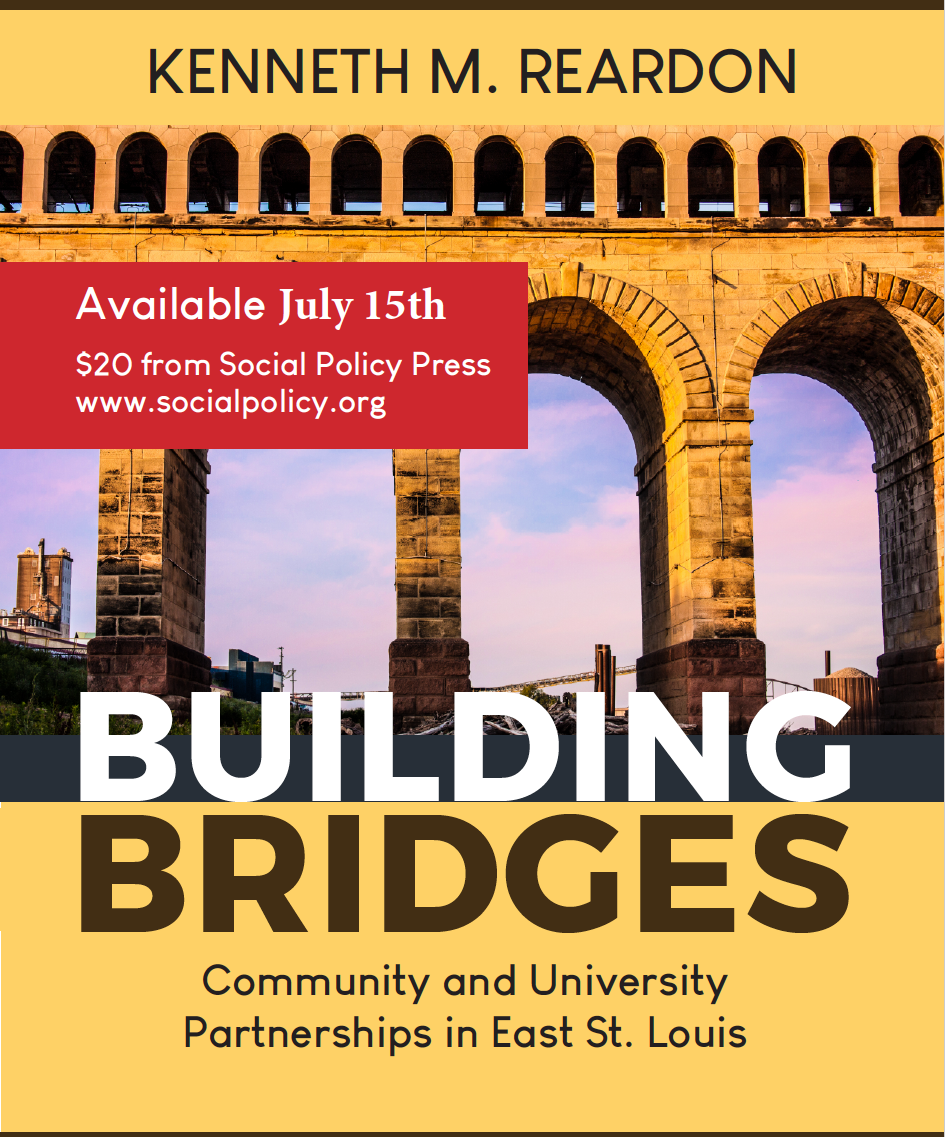EXCERPT - The Supreme Court at War with Voters
Written by Joshua Douglas
From The Court v. The Voters: The Troubling Story of How the Supreme Court Has Undermined Voting Rights
It was the perfect storm. First, conservative Justice Antonin Scalia passed away in February 2016, a presidential election year, creating a key vacancy on the Supreme Court. Instead of holding the necessary hearings for Merrick Garland, President Barack Obama’s eminently qualified nominee, Senate Majority Leader Mitch McConnell stonewalled, saying that the “American people should have a voice” in who will appoint the next justice.1 Against all odds, Donald Trump won the presidency and immediately selected conservative Neil Gorsuch for the spot. Step one of the plan to transform the Court was complete.
Next, the then-current swing justice, Anthony Kennedy, resigned from his seat in 2018, and President Trump appointed Kennedy’s former law clerk and protégé, Brett Kavanaugh, as his replacement. Step two, done.
Finally, Justice Ruth Bader Ginsburg—the “notorious RBG,” as her fans called her—passed away in September 2020, less than two months before the next presidential election. But instead of giving the American people “a voice” by letting the winner of the 2020 election choose her successor, McConnell pushed through Trump appointee Amy Coney Barrett a mere week before Election Day and after millions of Americans had already cast their ballots through early voting. That gave the Supreme Court—which had more or less been a 5–4 Court with the centrist Justice Anthony Kennedy in the middle—a solid 6–3 conservative majority. Think of it this way: if the Senate had confirmed the moderate Merrick Garland, and had Ruth Bader Ginsburg lived just a few months longer— allowing new president Joe Biden to fill her seat—then the Court today would have a 5–4 liberal or moderate tilt.
Instead, the Court is much more conservative than it has been in decades. That reality has stark consequences for our democracy. The cases profiled in this book—and others that rest upon them—have skewed our democracy toward the wealthy and entrenched. Politicians will continue to use the Court to craft strict rules that help to keep themselves in power. Everyday voters—and the overall structure of American democracy—remain the victims.
Although the Supreme Court has narrowed the protection for the right to vote under the U.S. constitution, state constitutions can still safeguard democracy, even with the potential of the Court invoking the supposedly milder form of the independent state legislature theory to cabin their reach. All fifty state constitutions demand fair elections and offer more robust protection for voters than what’s found in the U.S. constitution, as limited by the U.S. Supreme Court. Calling upon state constitutions is therefore still a viable legal path to uphold the fundamental right to vote, at least for state and local elections. Lawyers should double down on state constitutional litigation and activists should continue to push for broader voting rights enhancements within state constitutions.
Even with state constitutions as a bulwark, however, it’s difficult to envision a fair democracy—where voters reign supreme—with a Court that is anti-democracy. We could, of course, throw up our hands about the current state of the law and lament the democracy that was. We could retreat into our everyday lives, figuring that we can’t change the system. That’s the easy path. But that’s not my style. Instead, we must find tangible solutions to create a democratic structure that is truly reflective of the will of the people. We can stop asking “What might have been?” and instead ask “What might be possible?”
I see three paths, which we should pursue simultaneously: (1) the voting rights community should seek compromise in voting legislation and avoid the Supreme Court altogether, if possible; (2) we must have a serious conversation about meaningful—and reasonable—Court reform; and (3) we should further mobilize the electorate, using these anti-democracy cases as the linchpin for a new movement.
The Supreme Court has harmed American democracy, but there’s still a path to fix it. A better election system is within reach.
There’s Something in The Water (or Bourbon) in Kentucky
In 2021, Kentucky—a reliably red state—made national news for bucking the trend: it expanded the right to vote. The state enacted a bipartisan bill to both improve access to the ballot and tackle election security. Among other reforms, the state adopted three days of early voting—up from zero—while also mandating paper ballots, which are more secure. Passing the law took a conscious effort to seek common ground, reach across the aisle, ask for input from election experts, and make reasonable compromises. I would have liked seven days of early voting, for example, but three is certainly better than none. The result was a bill that both sides could support. Everyone had a stake in making it better. The law was not challenged in court, as hardly anyone felt aggrieved by the final product. Even if someone had sued, the courts probably would have upheld the law given how reasonable it is.
Republican Secretary of State Michael Adams, a pro-democracy conservative who led the effort, focused on reforms that would improve election administration. I had the good fortune of informally advising him on Kentucky election law, and what I noticed from those conversations was a real desire to serve the voters and the election system as a whole—while convincing lawmakers, especially of his own party, that the voting changes were good policy and also made political sense.
While election rules are undoubtedly polarized, there are seeds in this Kentucky story of what I call a Grand Election compromise. This framework could help us craft better election rules while also avoiding the Supreme Court altogether. If there is true compromise, with both sides achieving some of what they want, then it’s less likely that someone would sue to strike down a law. Yes, this approach requires a recommitment to democratic ideals from both sides. Perhaps there is a silent virtue to the Court’s too-narrow jurisprudence on voting rights: it forces us to double down on bipartisanship and compromise so that we can keep these issues away from the Court.
The Grand Election compromise entails four ideals that Democrats, Republicans, and everyone else should acknowledge and accept as a foundational starting point for our conversations:
- Every eligible citizen should be allowed to vote with minimal burden.
- The system should acknowledge concerns about the potential for fraud and set up ways to deter it.
- Voters should be as educated as possible.
- Elections should be won by ideas, not by the rules of the game or the partisanship of election officials. This also means that losers should readily accept their defeat.
These propositions are not controversial—or at least, they shouldn’t be! They all derive from an understanding that democracy requires the consent of the governed, which is a fundamental principle enshrined in our Declaration of Independence. They were at the heart of the compromise deal in Kentucky, and they can provide a baseline for future discussions. We can use that compromise as a seed for further conversations on the harder questions: abolishing the Electoral college, fixing Senate (mis)representation, and the like. We can tackle the most difficult issues only if we relearn how to talk to each other first. American democracy requires two viable political parties who are both committed to the ideal that the voters decide who is in power. Finding compromise in election rules, that both sides will see as legitimate, is a virtue—and can sustain our democracy. We should rightly brand anyone who opposes them as anti-democracy.
Who could reasonably object to the idea that election rules should satisfy the dual goals of making it easier to vote for those who are eligible and creating a system that deters fraud? Who could oppose a rule that promotes voter education or that focuses our elections on the voters instead of the politicians? Shouldn’t the losers always graciously admit their defeat, fighting their battles in the next election by convincing voters of their cause? These ideals are somewhat vague, but they provide a framework for evaluating a proposed election rule. If a new law does not promote these goals—and if it goes directly contrary to any of them—then it should be rejected as anti-democracy.
A majority of justices on the Supreme Court have proved time and time again that they will issue rulings that help politicians and harm voters. So, let’s just avoid the Court altogether. Let’s join conservatives and liberals through the Grand Election compromise. Let’s allow the four ideals of the Grand Election compromise to guide future policymaking. Sure, we should sue if legislatures enact laws that harm voters, ideally in state courts using state constitutions, but maybe we can follow Kentucky as a template to find compromise that makes litigation not as necessary.
Justices Should Not Serve for Decades
I’m not so naïve to believe that the Court will never issue additional, harmful election law rulings. There will, of course, be litigation as states continue to pass restrictive voting rules. Not everyone will embrace the Grand Election compromise. We need a solution that focuses directly on the anti-democracy forces that control the Court.
In the wake of Senator McConnell’s refusal to let the Senate consider Judge Merrick Garland, President Obama’s nominee to the Court, followed by President Donald Trump’s successful nominations of three conservative jurists, many on the left called for Court packing, or the addition of more justices to the Court. At least one (and maybe more) of the justices received their spots in illegitimate ways, the argument goes, so it makes sense to counter them with additional justices. Plus, the threat of Court packing worked in the 1930s to stop the Court from dismantling many of FDR’s New Deal initiatives. The constitution does not set the number of justices; Congress, in fact, has changed the size of the Court several times in the past, though the tradition of nine justices has continued since 1869. Congress could change it again.
I’m not convinced, however, that Court packing makes sense in this political climate. The Court could certainly use more justices. There are twelve regional circuit courts of appeals and a thirteenth subject-specific appellate court, so maybe twelve or thirteen justices makes sense. My main concern is that this move would be a pure power grab. In response, once conservatives control Congress and the presidency, they would add seats to counter the new liberal justices. Would Democrats then have to add more members to counter those new “Republican” seats? It’s a tit-for-tat with seemingly no end point. Already, after what McConnell did to stymie the Garland nomination, it’s reasonable to ask whether a future president could ever fill a vacancy if the opposing party controls the Senate. We might have vacancies last for years. We need to find a way to reduce the salience of these fights.
There are stronger reforms that strike more at the heart of the Court’s anti-democracy forces and will help the Court function better in the long term, without risking an escalating arms race over the number of justices.
First, Supreme Court justices should be subject to term limits of eighteen years.2 Most political scientists agree that term limits make no sense for elected officials, as they lead to weaker legislatures, increased polarization, and lower quality democratic representation.3 But judges don’t represent people in the same way. Several states have a mandatory retirement age for their state Supreme Court justices and the process works well.4 In the same vein, U.S. Supreme Court justices shouldn’t serve for life. The long tenure makes them too insulated from the real world. The happenstance of a justice’s death or retirement shouldn’t create such a monumental change in the law.
Eighteen-year term limits make sense because they would provide a natural rotation where every president will have two appointees per four-year term. Evening out Supreme Court appointments could lower the temperature of the nomination battles. Several Democratic members of congress have introduced a bill to enact this reform, though some opponents question whether it would be constitutional.5 There’s at least a good argument that there are no constitutional hurdles so long as an outgoing justice still retains their status as a senior justice, meaning they could hear cases on the lower federal courts and keep their salary. In any event, term limits are a viable solution to make Supreme Court battles less consequential, which would hopefully reduce the incentive to nominate justices who are ideologues. And even if the Court were still populated with extreme partisans, at least they wouldn’t serve for as long. True, as some scholars note, eighteen-year term limits could increase polarization by making every election a referendum on the Court—though in some ways that is already occurring.6 Regardless, at least the rotation of justices would be a lot more regular, which scholars suggest could reduce the time when the Court suffers from extreme ideological imbalances.7
Second, an even better idea would be to mimic the practice of the courts of appeals by increasing the number of justices on the Court and then having them sit in smaller panels. Most federal appeals courts have between eleven and seventeen total judges (though the First Circuit has six and the Ninth Circuit has twenty-nine), who hear cases in three-judge panels that are randomly selected. The full court can sit en banc, or with all the judges on that court, to rehear a case (except for the Ninth Circuit, which holds its en banc sessions with a subset of the twenty-nine). Each court also has senior judges, who are essentially semiretired but who can hear cases in these three-judge panels as well.
The practice of sitting in three-judge panels means that one panel must pay attention to the other panels and try to conform their decisions accordingly. A panel can’t go completely rogue, as the full court might decide to review that panel’s decision, although the courts hold only a few of these all-judge en banc sittings each year. Each individual nomination to the appeals courts is important, but perhaps the stakes are lowered because each judge won’t hear every case that comes before the court.
Congress could adopt a similar process for the Supreme Court. There could be fifteen justices who sit in panels of nine (or five or three) based on a random draw. Any panel could not overrule a prior Supreme Court decision. All fifteen justices sitting together en banc would have to consider that kind of ruling. To be sure, the most controversial cases would still likely go before the full fifteen-member Court, so combining this reform with reasonable term limits would reduce the likelihood of entrenched ideology reinfecting the Court. As two law professors who proposed a similar idea put it, a slightly larger Court that sits in panels might hear more cases each year, which “would enable the Court to provide a check against the other branches and lower courts, generate a more understandable and accurate body of law, and ensure greater consistency in the laws that govern citizens across the country.”8 On cases involving democracy itself, the random draw would lessen the likelihood of ideology driving the decisions—though there is the risk that the full en banc Court would just take all of these controversial cases, minimizing the effectiveness of this reform.
Third, again borrowing from the practice of the federal appeals courts, the Supreme Court could have a rotating cast of appellate and district court judges sit “by designation” on the Supreme Court. Currently, district court judges often sit on three-judge panels of the courts of appeals. Appellate judges also visit other courts of appeals in different parts of the country and hear cases there. This practice gives the judges valuable experience and places the focus of each decision on the law and precedent, not on the particular judges themselves. Why not let these judges visit the Supreme Court as well? There’s nothing magical about the work of the Supreme Court. Its docket is almost entirely a review of federal trial and intermediate court decisions, as well as appeals from state supreme courts when there are federal constitutional issues involved. Any federal judge could do this work on occasion, which will also likely improve their decision-making processes when they return to their own courts. And, once again, a rotation of “justices” to hear cases at their final stage might reduce the extent to which ideology infects the decisions, especially if Supreme Court panels are chosen randomly from all appeals and district court judges.9 Scholars have also proposed the requirement of a “balanced bench,” with a Court composed of five Democratic-appointed justices, five Republican-appointed justices, and five additional members from the courts of appeals whom those ten select unanimously.10
There is a strong argument that the Supreme Court needs serious reform. None of the ideas here—term limits, a larger Court that sits in panels, and a rotation among lower-court judges—has an obvious partisan valence, though no reform will eliminate ideology entirely. It’s impossible to predict how these changes would impact the Court’s decisions—which is exactly the point. The current Court is out of step with American democracy. Ratcheting up the partisanship of the Court by adding additional Democratic-appointed justices is not a viable long-term answer. We should instead focus on reforms that can gain bipartisan support because they will improve the operation of the Court for all.
“End Citizens United”
None of the ideas for Court reform will happen overnight. Although not as radical as Court packing, they still take strong political will to implement. The American polity must recognize the danger of the Court’s current jurisprudence and demand real solutions. That requires a political movement. We should use the anti-democracy cases to mobilize the electorate to press for real reform.
Chapter 5 mentioned the group End Citizens United, which focuses on the problem of money in politics. This organization offers a great example of how to use a harmful Supreme Court case to focus the public’s attention on a judicial decision that damages democracy. The group has made real headway.
Some of my political science friends helped me run a survey in summer 2022 to ask a representative sample of Americans about their views on important election law cases. We gave half of the respondents a list of cases from the past fifty years and asked which one has “been the most harmful to American democracy and our elections. Even if you think multiple cases have been harmful, please choose the one that you think has been most harmful to American democracy and our elections.”
Twenty-seven percent of the respondents chose Citizens United. Bush v. Gore came in second, with 26 percent. Over 11 percent of the respondents clicked “other” and most wrote that they didn’t know, though a handful listed something related to abortion, which was not surprising given that our survey went out just as the Court was overturning Roe v. Wade in the summer of 2022.
Results of Author’s Survey on Most Harmful Cases to American Democracy
|
CASE |
PERCENT |
|
Citizens United v. Federal Election Commission (2010) |
27.36 |
|
Bush v. Gore (2000) |
26.43 |
|
Brnovich v. Democratic National Committee (2021) |
11.29 |
|
Crawford v. Marion County Election Board (2008) |
9.16 |
|
Rucho v. Common Cause (2019) |
7.70 |
|
Shelby County, Ala. v. Holder (2013) |
6.64 |
|
other (please list) |
11.42 |
We asked the other half of respondents, who had not seen the list of cases from the previous inquiry, an open-ended question: “What U.S. Supreme Court case from the past 50 years do you think has been the most harmful to American democracy and our elections?” This question helped us gauge whether there were cases that had entered the public consciousness so much that everyday Americans could name them, even without giving the respondents any case names. Not surprisingly, 57 percent of our survey takers did not identify a case, most saying they didn’t know. Of those who listed a case or issue, about a third said “abortion,” which again is unsurprising given the national debate on abortion rights at that time. The next listed case was Citizens United or a mention of campaign finance, identified by just under 14 percent of those who offered a response to this question. No other case came close in the frequency of responses.
This data suggests that Citizens United, or at least the issue of money in politics, remains a salient flash point for a good number of Americans. Advocates for a stronger democracy should use this information to engage in further mobilization efforts. After all, the main antidote to anti-democracy forces is to improve voter turnout by a massive amount. Americans still believe in democracy. We don’t always vote, and even when we do, we often don’t put democracy issues at the forefront. That needs to change.
Those who seek meaningful reform should use the anti-democracy tendencies of the Supreme Court to foster a movement in favor of pro-democracy candidates, of whatever political party. A fidelity to democratic principles should be a litmus test for any future justices. Moreover, soundly rejecting anti-democracy candidates at the ballot will demonstrate Americans’ faith in democracy.
None of this is easy. The whole point of many of these judicial decisions is to enshrine rules that make it more likely for incumbents to win. Deference to state politicians on election policies produces incentives for extreme gerrymandering, restrictive voting rules, and a derogation of the laws that protect marginalized communities. It would take a true political wave to overcome these structural hurdles. But that’s what is needed to defeat the anti-democracy mentality that pervades many aspects of our government.
In short, we need to vote the bums out. We need to create a political culture in which democracy issues are at the forefront. We need to strive for massive turnout. Currently, turnout in presidential elections is below 70 percent and turnout in midterms hovers around 50 percent—and those numbers are already historically high as compared to just a few years ago. Why not 90 percent turnout or higher? There are significant hurdles to the ballot box for certain constituencies. We need to find ways to help these individuals overcome those barriers. A massive political movement is a necessary response to these challenges.
In his famous essay in the Federalist Papers, known as Federalist #78, Alexander Hamilton wrote that the judiciary “will always be the least dangerous to the political rights of the constitution; because it will be least in a capacity to annoy or injure them.” The executive branch—the presidency—has the power of the sword; congress has the power of the purse; but the judiciary has “merely judgment.”11
As we have seen, however, over the five decades since the early 1970s, the Supreme Court has taken on an outsized role in curtailing political rights. It’s become perhaps the most dangerous branch because of its effect on the makeup of the other two branches, thanks to its restrictive voting rights decisions.
But in a democracy, the people reign supreme. Although the Court has made our jobs much harder, we can still out-organize, out-mobilize, and outvote those who espouse anti-democracy views. This is not a short-term fix. We must double down on our commitment to create an inclusive democracy, where the voters—not the Supreme Court, entrenched politicians, or restrictive voting rules—determine the outcome.
As Benjamin Franklin left the Constitutional Convention in 1787, a woman asked him whether the delegates had created a republic or a monarchy. Franklin’s famous response: “A republic, if you can keep it.”12
It’s up to all of us to keep it.
Professor Joshua Douglas teaches and researches election law and voting rights, civil procedure, constitutional law and judicial decision making. He is the author of Vote for US: How to Take Back our Elections and Change the Future of Voting, a popular press book that provides hope and inspiration for a positive path forward on voting rights. This is his latest book and is published by Beacon Press in 2024.



